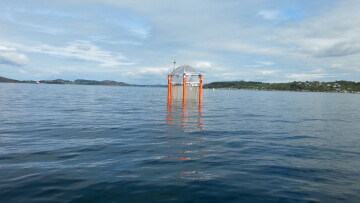Oxidative stress and antioxidant defence responses in two marine copepods in a high CO2 experiment

This article has been published in Science of The Total Environment, Volume 745, 25 November 2020, 140600 and can be found on Elsiviers site https://doi.org/10.1016/j.scitotenv.2020.140600
Abstract
We collected samples for oxidative stress and antioxidants in a high CO2 mesocosm experiment for two weeks, focussing on two common crustacean copepods Calanus finmarchicus and Temora longicornis. The samples were collected during a field experiment campaign studying responses of plankton communities to future ocean acidification (OA), off the Norwegian coast south of Bergen. The main results showed that there were species-specific differences between Temora and Calanus, especially in antioxidant defences (glutathione system) and oxidative stress (lipid peroxidation and reduced:oxidised glutathione ratio). Regular monitoring of chlorophyll a and jellyfish abundances taking place during the field campaign revealed that both chl a and predators may have affected the eco-physiological response. Antioxidant and oxidative stress levels are known to respond sensitively to both the food quality and quantity and the predator pressure, apart from environmental (i.e., abiotic) changes. Calanus was more robust towards OA, perhaps due to its high tolerance to a wide range of vertical physical-chemical conditions. Both top-down and bottom-up factors seem to play a role for the outcome of copepod responses to future ocean acidification.